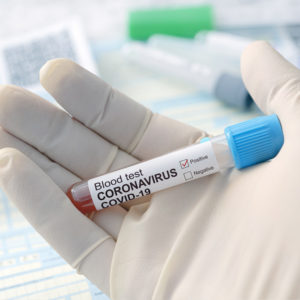State policymakers face unprecedented pressure in managing the COVID-19 disaster. A key component of their armamentum is practical, digestible information.
To help, the Mercatus Center has rushed the release of our Healthcare Openness and Access Project (HOAP), 2020 edition. HOAP data suggest strategies for minimizing the epidemic’s impact on states’ residents and economies.
HOAP measures the discretion each state’s patients and providers have in seeking and delivering healthcare. The 2020 edition has 41 indicators measuring openness to telehealth, non-physician providers, out-of-state doctors and other means of stretching healthcare resources. Indicators are grouped into five categories and aggregated into an overall state index.
Using HOAP, legislators can ask, “How free is our state to harness healthcare resources to benefit patients?” With the COVID-19 pestilence, such leeway saves lives.
While we don’t yet know how severe COVID-19’s effects will be, the epidemic combines the fears of both the 1929 stock market crash and the 1941 attack on Pearl Harbor. Like 1929, COVID-19 has battered Americans’ financial security. Like 1941, Americans fear for their lives and safety and that of their loved ones. But unlike these earlier events, the imperative for “social distancing” means Americans today must suffer their fears in isolation.
The greatest threat is Italy’s present-day horror — of emergency rooms and intensive care units overwhelmed and reduced to battlefield triage. Since no vaccine is yet available and testing kits are scarce, the primary tool for preventing patients from overloading the healthcare system has been “flattening the curve” — keeping us apart from one another so new patients fall ill slowly enough to remain within the hospitals’ capacity to serve them.
A complementary strategy we call “raising the ceiling” is increasing the medical system’s capacity to absorb new patients. It’s here that HOAP enters the equation.
In recent weeks, states have implemented HOAP-like measures with blinding speed. (Americans for Tax Reform maintains a running list of such actions.) Some states have expedited the process of acquiring medical licenses. Some now allow physicians, nurses or other professionals to practice with valid licenses from other states. The Trump administration is reinforcing de facto interstate licensing.
Other states have cleared pathways for retirees to reactivate their licenses, and a number of states are encouraging greater use of telemedicine. The Trump administration has done likewise by effectively allowing telemedicine doctors to practice nationwide and by expanding for Medicare recipients. Governors in several states have brushed aside certificate-of-need (CON) requirements that even in calmer times impede the addition of new beds and intensive care units.
Still other states have broadened scope of practice for nurse practitioners and other allied health professionals. Seeking to ease one critical shortage, Massachusetts empowered licensed pharmacists to produce hand sanitizers —a nd the federal government has moved to allow whiskey distillers to do likewise.
We will conclude this article in separate voices:
Robert: I’m an economist — a mere academic scribbler. But my work puts me in proximity to the real heroes — healthcare professionals. They are this war’s boatmen at Dunkirk — improvising and extemporizing in ways they never expected, using only the woefully inadequate vessels on hand. My co-author is an obstetrician/gynecologist —
Darcy: As a practicing physician, I see the strains on our ability to provide healthcare safely to both patient and provider. Basic medical equipment, like gloves and masks, are in short supply. Doctors and nurses aren’t coming to work, either from quarantine restrictions from COVID-19 exposure, or from fears of bringing the disease home to loved ones. I find myself wishing for a much nimbler response. Wishing we already had the infrastructure for telemedicine in place so that those who are healthy can stay healthy and be cared for remotely, if possible.
Wishing a fluid labor market were already in place, so I would have a large swath of backup colleagues ready and able to step forward to replace those of us who become sick. And wishing we had more supplies. Let’s hope the healthcare system — so glacial to change — can become nimble. Let’s hope we can turn the Titanic around.

